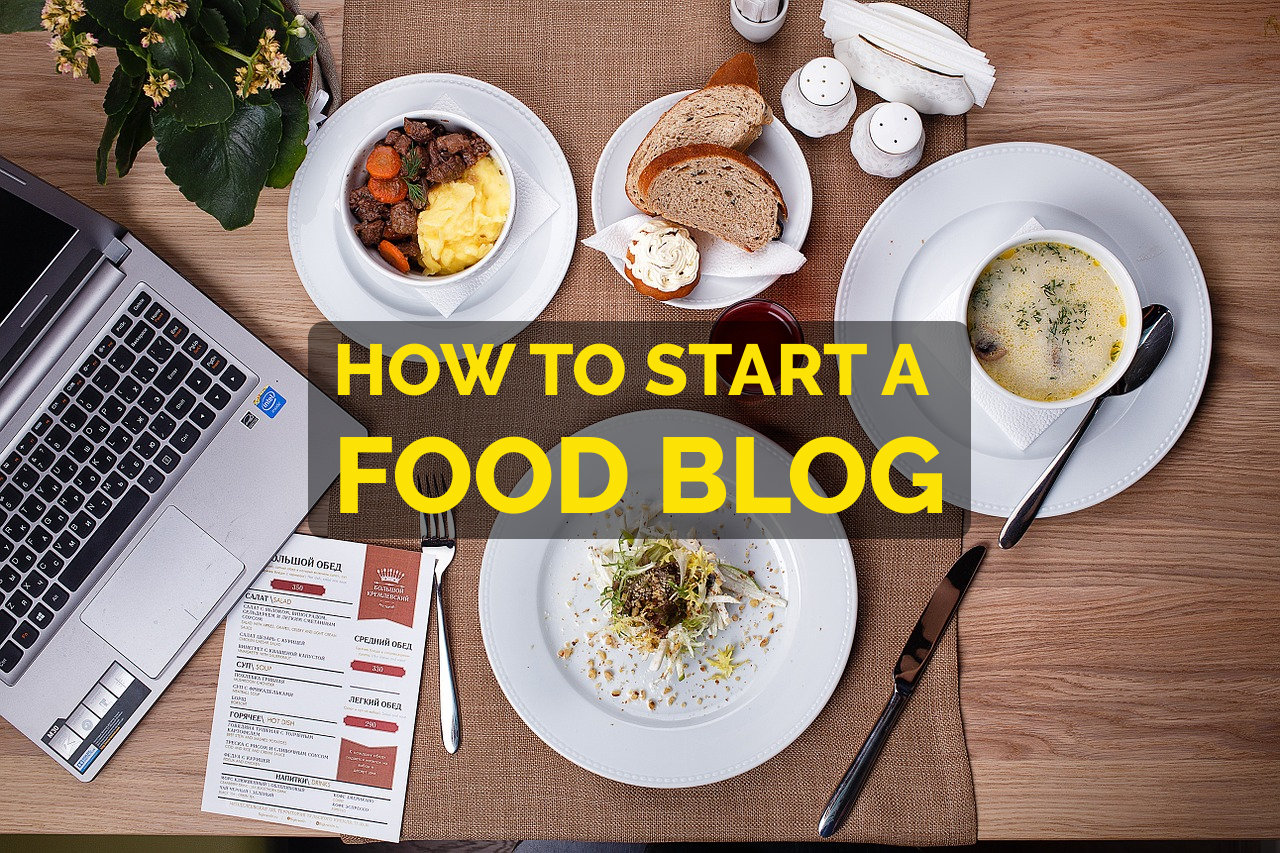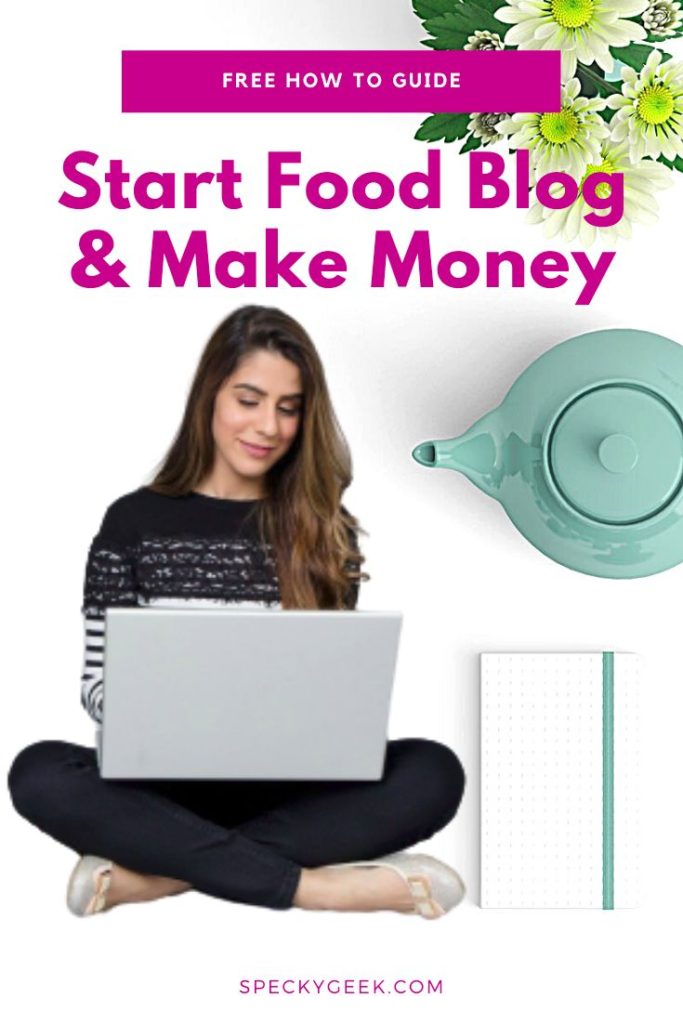Want to learn how to start a food blog and earn money as a food blogger (in India, US or anywhere in the world)? Don’t know how to start food blogging for income? Here’s the comprehensive tutorial for food blogging.
If you want to learn how to start a food blog and make money online, this article will illustrate a step-by-step method to start a successful food blog. (Updated for 2020 and beyond.)
Let’s get started with learning how to become a successful food blogger and start making money through food blogging. 🥘 🍲 🍕
Whether you live in United States (US), UK, India, Australia, Canada, Nepal, Pakistan, Turkey, France, Nigeria, Hungary or Nepal, your location doesn’t really matter. You can use this guide to start a food blog and earn money online anywhere in the world. You could even be a digital nomad, travelling from one place to another.

Should You Start a Food Blog?
Before we start talking about how to start a food blog, let’s understand why you should start your food blog. It is easy to get carried away with the success of others on the Internet.
Don’t just try to copy others blindly.
Starting a food blog is easy. Being successful food blogger — not so easy.
To become a successful blogger, you need passion for blogging.
Similarly, to become a successful food blogger, you need to be passionate about food blogging. If you are not passionate about food and cooking, it’s going to be really difficult to become a successful food blogger.
If you are not much of a foodie or take little interest in cooking, it is recommended you pick a different subject and niche for your blogging.
Passion makes it easy to work, but you can still ace at things that you are not really passionate about. However, you must be able to replace passion with hard work and perseverance.
If you don’t mind slogging and sweating in your kitchen trying to make recipes, click pictures and create videos, you should be able to become a successful food blogger.
Are you still interested in starting a food blog? 🥘
Food Blogging is a Huge Niche
Blogging has become a career for lots of people. Food bloggers are also a dominant face in the blogging industry. As long as people like to eat, food blogging is likely to remain a massive blogging niche. There are thousands of food bloggers who are killing it with their blogs, sharing recipes and making money on their way.
Each country and even local areas have their own cuisine. This presents an enormous potential for food blogging. For instance, India has a variety of cuisines across the country.
Hundreds of bloggers make a living with their food blogs. Some blogs generalised to cover the entire length of the country, while others have stayed focused to state-specific cuisines of India. A number of Indian food blogs are solely devoted to vegetarian recipes.
Do you have any specialised area for cooking? You can easily gain success as a food blogger if the cuisine has a decent population. Also, if there are only few blogs for that cuisine, you should be able to achieve success more quickly.
How to Start a Food Blog & Make Money?
Too busy to read a lengthy tutorial on food blogging? Here’s quick overview of how to start a food blog and embark upon your food blogging venture.
- Research your niche: Choose your food blog niche, topic and unique style.
- Set up your blog on WordPress: Register a domain name (prefer .com), purchase web hosting (recommended hosting companies) and install WordPress as your website platform.
- Customize your blog: Choose a theme/template, create a logo and make your blog look awesome.
- Add quality content: Start publishing amazing articles, images and videos.
- Promote your blog: Once your blog is ready, start promoting it. Go all the way and share it with everyone via forums, social media and among your friends. If you have some money, you can also use advertising avenues for blog promotion.
Now that you know the basic outline of how to start your food blog, let’s delve into each of the steps in elaborate detail so that you have all the essential ingredients and the recipe for a successful food blog. 🙂
1. Research: Choose a Topic for Your Food Blog
When it comes to food blogging, a copy-paste or rehashing some existing recipes is unlikely to help you enter the group of elite food bloggers. You really need to have a good knowledge of your cooking and cuisine to create an exemplary food blog that keeps the audience coming back for more.
With a huge number of food blogs already existing on the Internet, you are more likely to achieve success with an focused approach for you blog. Rather than being a just another food blog, find a unique offering for your audience with a food blog specialised in certain cuisine.
The secret ingredient to success in food blogging is: “YOU”.
If you can add your personality to your blog, it will help your food blog stand out of the crowd. How to achieve this?

Mix your articles and videos with your personal stories and life journey. Adding your personal touch to the articles makes a great blog in terms of branding and storytelling. Share personal anecdotes and memories in articles.
When clicking food recipe images, include yourself. You can shoot your images/videos while cooking in your kitchen.
Don’t just stay in your kitchen. Try cooking outside — in your garden or at picnic spots. If you prepared a dish for your blog, go out for a picnic and add those exciting pictures with your recipe article.
How can you be different from the crowd of food bloggers?
Try to answer the following questions to find your own niche and voice for food blogging. Take a notepad and jot down the key points while exploring these questions.
- What is your favourite cuisine?
- What are your strengths and weaknesses?
- What are your favourite food blogs and why?
- Who is your target audience and how can your help them?
Once you have the niche for your food blog, don’t rush to start a blog yet. Check if there are people looking for the recipes and cuisines that you want to write about. You can use Google Keyword Planner Tool by Google Adwords or any online tool for finding keywords.
If a niche has at least 100,000 monthly search for main keywords related to your cuisine, it can be a viable niche for your food blog.
In food recipes niche, the search volumes are spread across numerous keywords and specific recipes. So, it’s quite unlikely to find a narrow, unviable niche if the cuisine covers a decent population.
Spend a couple of days discovering and analysing successful food blogs. Explore your competitors in your target niche and see if they are doing well as professional blogs. A healthy number of competitors means you have a good number of potential audience for your blog.
Now, sit down and create a plan.
You don’t just want to know how to start a food blog, but you want to learn how to start a food blog that grows into a successful food blog. That’s why you need a proper plan to achieve your desired goal of becoming a successful food blogger.
Start with with the vision statement for your blog: why this blog, what will it publish, and for whom (audience).
Make a list of broad categories for articles. Create a list of articles and then organize a publishing timetable based on the articles and their usefulness.
For instance, you might want to publish simple articles before going ahead with more exquisite ones. Also, you might want to distribute your monthly articles across different categories rather than publishing just one type of recipes month long.
2. Creating Your Food Blog: Domain, Hosting & Installation
Once you have finalised the topic niche, created a basic outline for your food blog and decided on a publishing timetable, you need to actually set up your blog. For a professional blog, you need domain name, web hosting and a blogging platform.
a) Register Catchy Domain Name ($1-$15/year)
Domain name is the identity of any website or blog. It is the .com, .in, .co.in name that we use to open a website.
When thinking of a domain name, keep it short and simple. Easy to memorize, and brandable domain names are good. If possible, include your primary keyword in domain name, eg: indianvegblogger.you, supercook.com, etc. Make sure to register a .com domain name. If not, go for your local domain extension such as .in, .co.uk, etc. Avoid other extensions if not sure.
Register your domain name with a good registrar such as GoDaddy. For new users, GoDaddy even has offers such as .com domain at $0.99 for the first year. Avoid registering your domain directly through your hosting company.
b) Buy Reliable Web Hosting ($40/year+)
Once you get your domain name, you need web hosting server space to store your website files, images and database, etc. When someone enters your domain name, the web browser is directed to the associated server and renders your blog.
You need a reliable hosting provider. Normally, it costs you around $10-15/month for shared web hosting with unlimited websites hosting. Check our hosting recommendations.
Beginners may purchase domain and hosting together from single provider. It saves you the work of linking your domain with your web hosting.
However, I recommend registering your domain name from any reputed domain registrar such as GoDaddy, Namecheap, etc. It is fairly easy to link your domain with your web hosting space.
When you purchase web hosting, your provider will send you the Name Server details (eg: ns1.speckygeek.com / ns2.speckygeek.com) for domains to point to the hosting. Just update your domain’s name server with your registrar and allow some time for the change to reflect.
c) Food Blogging Platform: WordPress (Free)
You need a content management system or blogging platform to easily publish articles, images, etc. You can easily install WordPress, an open source free blogging platform, in a few minutes.
Learn how to install WordPress? You can use auto installers or install it manually for more control.
- Download the ZIP file from WordPress.org. Upload the ZIP archive in the web server folder and extract its content. You will get a WordPress folder. Go into the folder, select all files and folders using Select All. Move the files to the root folder, outside the extracted folder.
- Create a MySQL database and a database user with rights to manage the database.
- Create a custom email address and forward it to your primary address or set up the new address in your email client.
- Now, open your website in a browser, with or without www based on whether you want it in your blog address or not. You will find the WordPress installation wizard page. Enter your desired details with MySQL and new email.
- You have installed your WordPress blog. Log in to the dashboard using the credentials provided.
Alternative Method: Start Your Food Blog for FREE (Almost)
Do you think buying web hosting space for a self-hosted WordPress website and domain is too expensive? You can start blogging with free Blogger or WordPress blog. However, it will have a web address such as yourblog.blogspot.com. You can also start blogging using Blogger with custom domain to avoid buying web hosting.
However, a custom domain and self-hosted WordPress blog is essential for any professional blog. If money is an issue, get a custom domain name (less than $1 when using new domain registration coupons) and use Blogger.com for your free food blog.
Never use a free Blogger or WordPress.com address for a professional blog.
Free blogging options are not the best option because the service provider (Blogger/ WordPress.com) has control over your blog and you can be denied access to their service any time. Also, it makes you look like an amateur. You want to appear as a person who is taking food blogging as a serious business.
A custom domain gives you the freedom to have your blog hosted on your own hosting later on. It also helps you exert more control and ownership of your website.
3. Customize Your Food Blog
Once you have your blog installed, it’s time to tweak it for the optimum performance for a food blog. You need to customize the appearance with any of your desired WordPress themes and enhance the functionalities with WordPress plug-ins. Design a logo for your food blog with some interesting icon.
Customizing the appearance is easy. Just go to your WordPress dashboard and click Appearance > Themes > Add New and browse through the free themes available. You can get awesome food blog themes from WordPress.org for free. Alternatively, spend a few bucks on a premium WordPress theme.
Adding the right plugins is equally easy. Just go to your WordPress dashboard and click Plugins > Themes > Add New and browse through the plugins available. Some recommended plugins are as follows:
- WP Super Cache: For caching your dynamic WordPress site and making it load faster.
- SEOPress or Yoast SEO: Adding SEO features such as SiteMap, description and title to your website & blog posts.
- Contact Form 7 or Ninja Form: Adding contact forms to your website.
- RecipeBox: Adding & displaying recipes with proper SEO and rich snippets for recipes.
- Recipe Hero, Easy Recipe & WP Ultimate Recipe: Other options for adding recipes.
Set Up Google Analytics & Webmaster Tools for Your Blog
Now, set up a new Google account and email (Gmail) address for your blog or use your existing Google account. Once you have an exclusive Google account for your blog, set up the following:
- Google Analytics: Add your blog to Google Analytics for tracking your blog traffic. Install the tracking code in the custom code option provided by your theme. Alternatively, use any Google Analytics plugin.
- Webmaster Tools: Another useful tool is Google Search Console, which helps you submit your website sitemap and get your blog indexed & listed in Google faster. It also provides you lots of useful data to understand how your visitors use your blog.
4. Adding Content: Publishing Amazing Recipes
Start publishing awesome recipes and articles on your blog. Your food blogging can have different forms – articles, images, videos, graphics, podcasts, ebooks, etc.
Always create your own articles & media. Stealing content is a big no. Everyone hates it, including Google.
Write original, long-form articles with interesting images and videos. Break your articles in sections with headings and small paragraphs. Add images and videos to your articles.
Makes your blog posts easy to read, both in terms of language and appearance. Don’t have huge chunks of text and long paragraphs. For recipes, click pictures of different steps and processes. Post them with each recipe step to make your recipes look great.
Structured data or Schema is a must for recipes. Most good recipe WP plugins will allow you to enable recipe schema tags on your blog. You can learn more about recipe schema tags on Schema.org or Google.
5. Promote Your Food Blog: Reaching Your Audience

At this point, you know how to start a food blog, but how to make it a successful food blog with lots of visitors? When it comes to making a successful food blog, everything boils down to traffic or number of visitors.
How to promote your food blog and reach your target audience?
Search engine traffic is one of the primary sources of traffic for all blogs. Getting free organic traffic from Google search is the key to grow your food blog business.
Start by publishing unique content created around highly searched keywords and incorporate related keywords in your articles. Make sure to incorporate the search phrases people use to find the content you are creating and include them in headings, image titles, etc. Don’t worry about rankings yet.
Once you have substantial number of articles on your website and your blog remains fresh with new articles published often, you will gradually see your readership grow.
Social networking sites such as Pinterest, Instagram, Facebook and Twitter can help get readers and regular followers for your food blog.
With people looking for nice photographs of food on Instagram, you must make the best use of it. Get your own Facebook page and Twitter handle for your food blog. Share your blog with your friends on social media.
Tip: Pinterest is a great platform to promote your food blog and recipes. Unlike Instagram, Pinterest allows you to drive traffic to your blog. Pin 1-10 posts with attractive visuals. Your blog will start getting visitors in a few months.
Do you still need help with your food blog? Don’t worry. I am always here to assist you. If you run into any trouble or need some suggestion or require hand-holding in starting your food blog, do not hesitate to get in touch.
Start an awesome food blog. Don’t forget to share your blog and how well you are doing. 🍩 🥘
